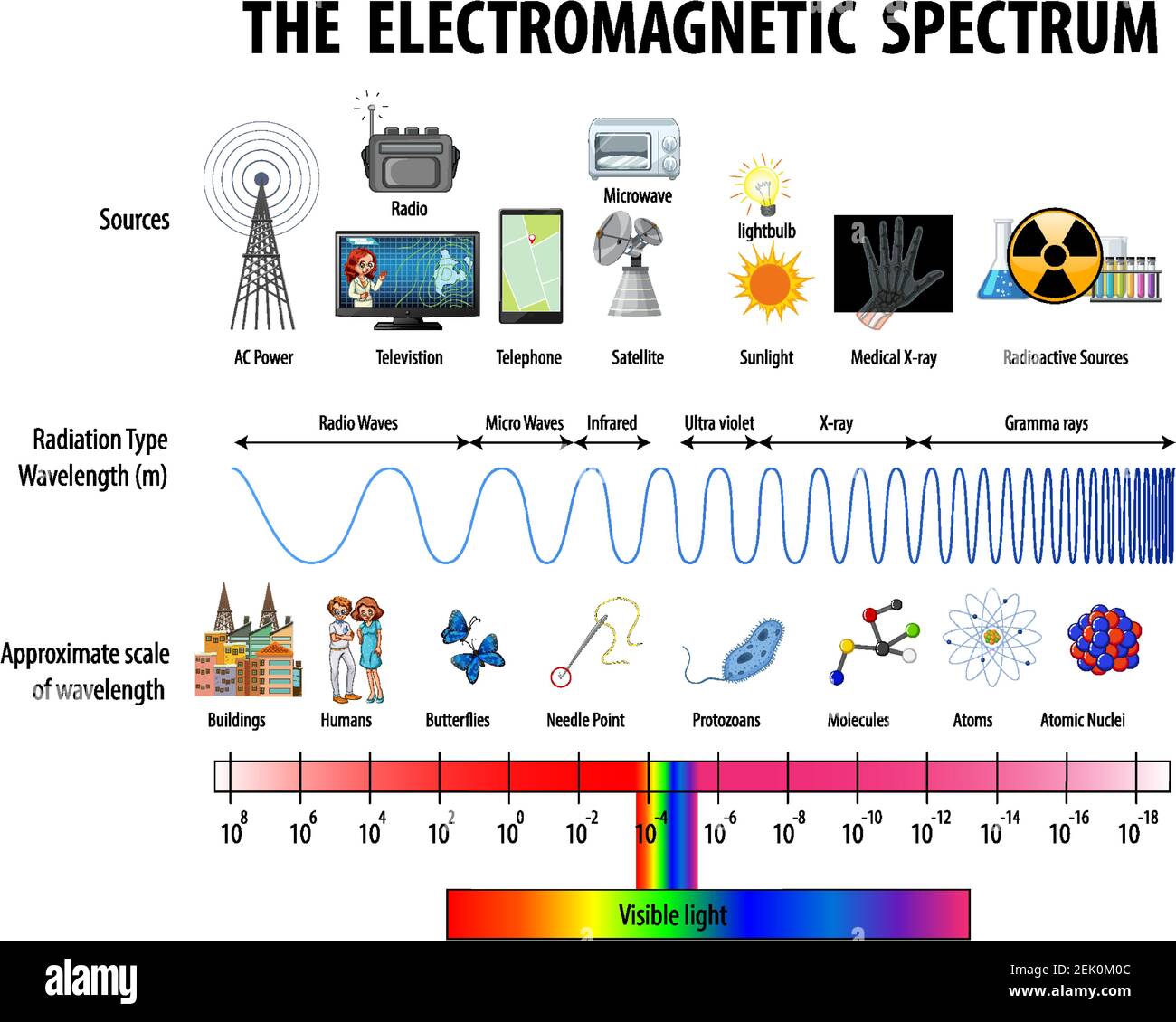You might think that but really our radio waves are like a spark compared to the forest fire that is the sun. We only think of radio waves as extreme or flooding because they usually have better penetration because of the lower frequencies.
This also why basically everything alive that has sight is looking at roughly the same spectrum as humans, it is just very abundant, has a high frequency (eyes can be small) and is just below ionizing radiation so easier to stay healthy. And the low penetration is useful, imagine a transparent tiger.
What about Infrared? Wouldn’t that be immensely useful? I’ve always wondered why no species has ever evolved infrared vision.
Thermal imaging requires specialised organs. The difference between optical and thermal wavelengths is too extreme for a single organ to cover. Long wavelength IR is also quite low resolution for visual purposes.
Snakes have evolved the capability, but it’s not common.
They’d have really big eyes. Depending on the wavelength they can see, they might be nearly all eye.
If they were able to see a significant chunk of it at good acuity they’d have to be so big I doubt they could survive in a gravity well thanks to the square cube law of surface area. Be more like living space stations. If they were distributed organisms like a mycelium or Aspen colony, maybe they could survive actually visiting Earth, but they’d be really big. Processing that much data over large areas would mean they are very sophisticated thinkers but with a very high latency so slow.
One fun implication of these building sized to tens of kilometer sized eyes is that am sources would look like a one color light source getting brighter and darker while an fm source would slightly shift colors. Going to earth would be like going clubbing with strobes and disco lights thrown everywhere.
Edit: the 2 comments below give a pretty good explanation as to why the following comment is not correct. Original comment, as always:
I don’t see why they’d have to have big eyes. We use massive radio telescopes for sensitivity, not for the spectrum range. AM radio is in the order of 100 meter wavelengths, but handheld devices can receive it. Wavelength isn’t really the defining factor as much as being able to handle the frequency of the data over the time required. Wavelength is not how tall the wave is, amplitude is.
Handheld devices can receive it, but to actually “see” with it you need a very large aperture(iris) and a “retina” with many of those antennas that respond to different wavelengths. The overall structure of an eye capable of seeing would be massive, not because the signal is faint or you can’t “fit” the amplitude in the aperture but because that’s what you need for acuity and to actually have meaningful angular resolution. Those long waves have more limited angles to fit in a given eye diameter. For something like AM, we’re talking a very big structure.
https://en.m.wikipedia.org/wiki/Angular_resolution
θ ≈ λ/D where θ is the angular resolution, λ is the wavelength, and D is the diameter of the aperture
As you can see, increasing the wavelength by orders of magnitude means you need to increase the aperture by orders of magnitude to get the same angular resolution.
I realize now I was thinking of data in the time axis rather than the width/resolution direction
Massive singular radio telescopes are used to pick up individual signals from one direction, and can’t do imaging alone.
Sure you can pick up long wave radio with smaller antennas, but not without trade-offs. They often need long coils, and to make up the remaining difference you need to very precisely control electric resonance, and you lose efficiency (you pick up less energy from the radio waves). You definitely can’t do imaging with just one.
Just look at how big NFC and Qi coils are, they can’t practically be made smaller at those wavelengths, or else you lose too much energy!
Massive radio telescope arrays spanning the globe uses the massive distance to create a tiny amount of angular resolution, just enough that with months of processing you can image a black hole a few light years away with some thousands of pixels. Compare to how your phone can run deblur algorithms on a fraction of the power over far more pixels, because the angular resolution makes such a huge difference (blur radius is infinitely smaller)
Also, amplitude is signal strength. That’s only tall on a chart.
Alright, I think I can see I was picturing data in the wrong dimension. The data for an AM radio, in a very human-like interpretation, is running along the time axis rather than actual width across the available sources. It’d take multiple radios to “see” multiple frequencies.
Biblically accurate angels have entered the chat
You’ve described the reasons why aliens that see in the radio spectrum would never evolve in the first place. Aliens from a particularly cool star might have their vision attuned to infrared, but no place that’s warm enough to have liquid water would be cold enough to make radio waves more useful than infrared.
Yeah and even functional infrared eyes need to be at least twice the size of ours if not over ten times for more far thermal ranges. Anime eyes. The classic 20/20 D&D infravision would require eyes the size of basketballs, lol. Dark elves would put the innsmouth look to shame.
Larger than they would be for visible light, yes, but not necessarily larger than human eyes. Birds, for instance, can have amazing vision with much smaller eyes.
We see in the visible part, yet we are not blinded by all the light.
Revved up like a deuce, in the middle of the night
“Ripped up like a douche” - my friends in high school
in the middle of the night
“another runner in the night” ♪♫
I feel like this is missing a word or two
Im confused by the statement. If im reading this image correctly radio is well out side human range. Unless you meant you are not human in which case nvn.

If you were an alien sensing radio waves a city for you would be the same as a bright day for us: we are used to lots of visible light being scattered around, and the aliens would be used to radio doing the same.
The point is we have adaptations that allow us to handle the amount of light we live in. As humans, it’s not sensitive enough for moonless night activities and not adaptive enough to handle staring at the sun, but appropriate for most earthly activities. Meanwhile, nocturnal eyes in other animals are easily overwhelmed in daytime and diurnal eyes can be even less useful at night. So for this alien, we can’t decide if it’ll be blinded or perfectly competent at handling our local illumination. All depends on if it evolved to hide between stars or eat inner planets
Doesn’t all our wireless communication basically amount to nothing compared to the sun?
Life on earth that only sees in the radio part of the light spectrum is probably extinct now without us ever knowing it existed.
Not sure why aliens would evolve to see like that. Their vision would be extremely blurry, the smallest detail they could resolve would be about the same size as the wavelenght (meters to kilometers).
Space whales are the only option here I think
Probably not. Our wireless communications, with the rare exception of large radio station, is rather weak - on purpose.
You get more radiation from a summer afternoon outside than from sitting in the same room as the router for decades.
[off topic?]
There’s a science fiction series called The Lensmen by ‘Doc’ E.E. Smith. Big influence on Star Wars and other space operas. In one book a human is preparing to visit one of the most dangerous civilizations in the Galaxy. Super-special, quadruple strength armored suit he hopes will be strong enough to protect him.
The planet has a tech level equal to mid-20th Century Earth, but the natives are completely deaf. So none of the cars, trains, planes or other machinery has any noise dampening.
He survives, but it’s close…
https://bookshop.org/p/books/the-lensman-super-pack-e-e-doc-smith/20084689?ean=9781515460855&next=t
That’s interesting but you’d have dampening because all the vibration can also be felt physically and damages stuff.
Classic stuff. I remember that story. The whole Lensmen series was so influential for me early on. Thanks for bringing it up.
Not exactly the Lensmen, but a really good and underrated book.
https://bookshop.org/p/books/the-guns-above-robyn-bennis/c421005cea8a54ee?ean=9780765388773&next=t
Airships in the Napoleonic Era. The author does a great job of engineering the ships. Pretty much the only 'fictional" element is that they have access to unlimitied amounts of helium.
Almost definitely.
TV stations are broadcast sometimes at 100KW. Compare that to a 40 watt LED bulb.
Not that power input and light output are exactly the same but the Las Vegas sphere is 28MW
Area.
I saw it up close with my naked eyes. No goggles needed.
Bit of a spoiler, but that’s pretty much the premise of an alien invasion in the book Blindsight. They see our communications as an attack.
If they came to Earth, yes.
It would probably give them the Screamies.
(Excellent 1960s sci-fi book, highly recommend)
“Thousand points o’ laight” – Bush; one of them. 2001 was a thousand years ago.







